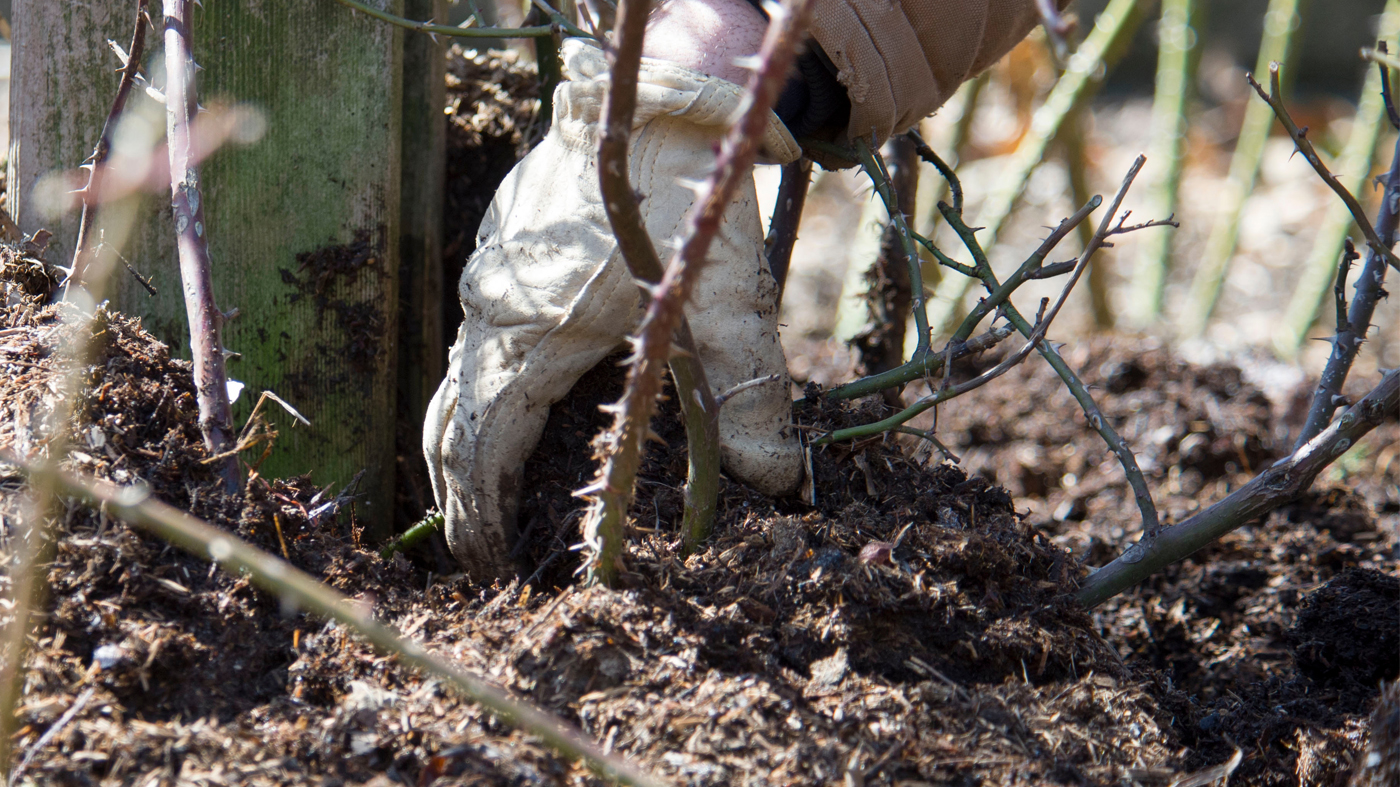
Planting and mulching seem like basic gardening skills, but some of the worst gardening mishaps occur when gardeners overthink or overspend. David Cantwell, assistant horticulturist at the Chicago Botanic Garden, mulches and plants nine acres and offers these tips:
Purchase the right plant
Shopping for a tree? Do not be intimidated; insist upon inspecting the burlapped root ball. Remove the soil and planting material at the top of the root ball so you can see the base of the tree's trunk where the larger roots spread out into the soil. If there is no widening at the base, the tree may not be healthy. The trunk should flare out at the soil level—this is known as the "root flare." When finally planted, this root flare should be at least three inches higher than the surrounding soil.
Visit Chicagoland Grows for suggestions on trees and plants best suited for the Chicago area.
Break the cycle
When you bring home a containerized plant, you notice that the roots grow in a circular direction. That cycle must be broken before planting or the roots will eventually strangle the plant. Here's what to do: For container-grown shrubs and small trees, take a sharp pair of pruners and vertically score the root mass in at least five passes, top to bottom. These clean cuts will promote root growth, and circling (girdling) roots will be disrupted. If the roots are less dense and the potting soil is loose, it is easier to tease out the roots to grow away from the main trunk. When placing the plant in the hole, pack the soil firmly, but not too tightly. For balled and burlapped roots, take a sharpened spade and shave off the outer 1 to 2 inches of soil and root tips before planting.
Dig the right hole
Shallow is better than deep (roots need soil with lots of oxygen, found closer to the surface of the ground). Sloped sides are better than sharp right angles because they allow more airflow and better root growth. It is not necessary to amend the soil—just make sure the sides of the hole are roughened up to enable growing roots to "catch" and penetrate the surrounding soil.
Avoid mulch madness
Mulch minimizes weeds, reduces water loss, and encourages plant growth by assisting in nutrient amendment and by reducing soil erosion. However, mulching too much is far worse than not mulching at all. Mulch is a planting medium that may not be entirely decomposed, so it may continue decomposing after it has been placed. Decomposition generates heat and can damage bark, especially with soft-barked or younger trees, and it robs the soil of much-needed nitrogen. Many gardeners make the mistake of building a mulch "volcano" around the base of a tree or other plant. Only air should come in direct contact with the tree bark: anything else fosters disease, mold, and other maladies. And often, dense piles of mulch (especially wood chips) actually route water away from the plant and wick moisture from the soil.
Mulch wide, not deep. Thumb-deep is enough. Trees send out roots laterally: they can extend hundreds of feet away from the mature tree to find water and to network with other trees. When too much mulch is placed over the roots, the tree seeks oxygen higher up. Instead of traveling out, the roots waste energy rising toward the surface of the soil.
Select mulch made from healthy, native, local wood and/or leaves (nothing beats leaf mulch also known as "leaf mould"), instead of showy imports that can actually harm your plantings. Look for organic, composted types, and buy in bulk to save money. Though they are often free for the taking, avoid using wood chips over the root zone. Use woodchips only for "p" surfaces: pathways, picnic areas, playgrounds, parking, etc.
Water the right way
For at least one month after planting a tree, water at least 2 inches per week (as long as the water drains away and does not puddle around the plant an hour after watering). The goal is to have the water penetrate the root zone. Even if the soil or mulch is dry at the surface, the soil below may be sufficiently hydrated. Poke around to be sure. Be sure the plant stays well hydrated its first two season—after that, less watering is needed because the roots will gave established themselves into the surrounding soil, and deep watering, less often, will promote stronger root growth.
Ring around the tree
Consider leaving a grass-free ring around the base of your tree. Grass competes with tree roots: it robs available oxygen, moisture, and nutrients from the tree's root zone. Leave a grass-free, lightly mulched soil diameter around the tree, especially younger trees. The circle should be at least as wide as the tree's canopy and will enhance healthy growth.

